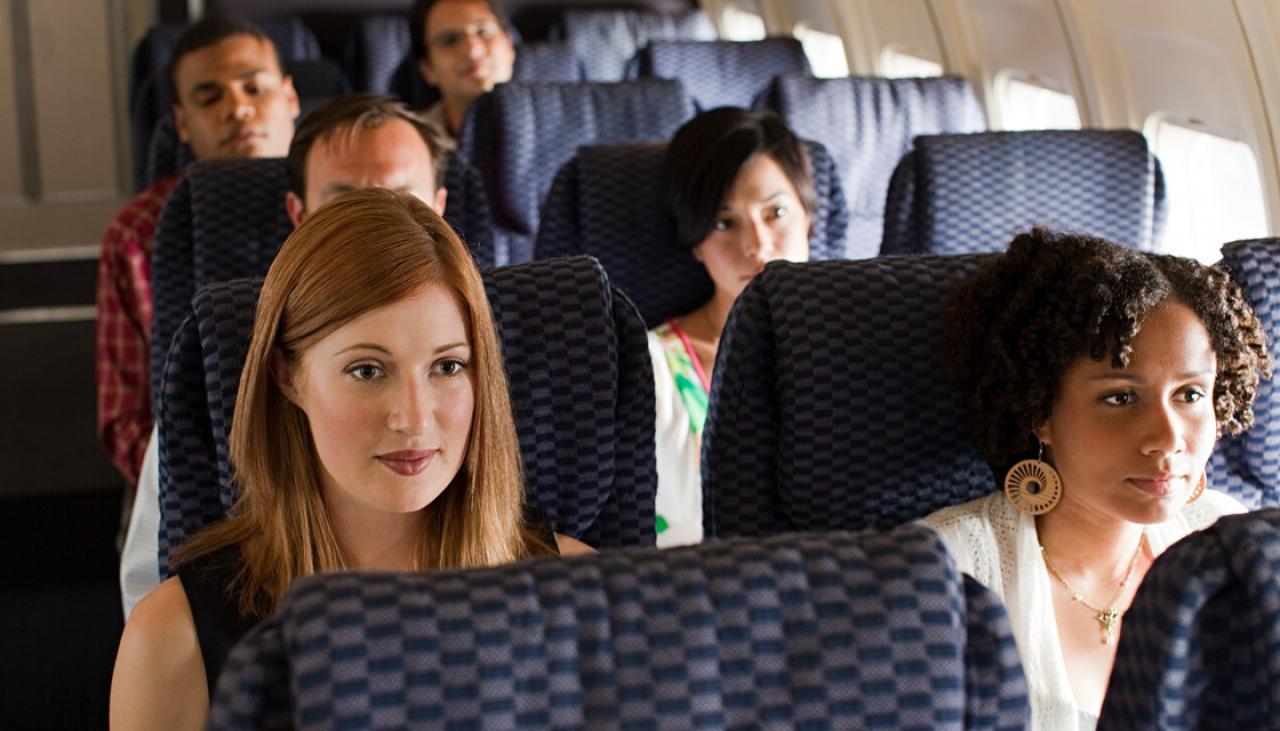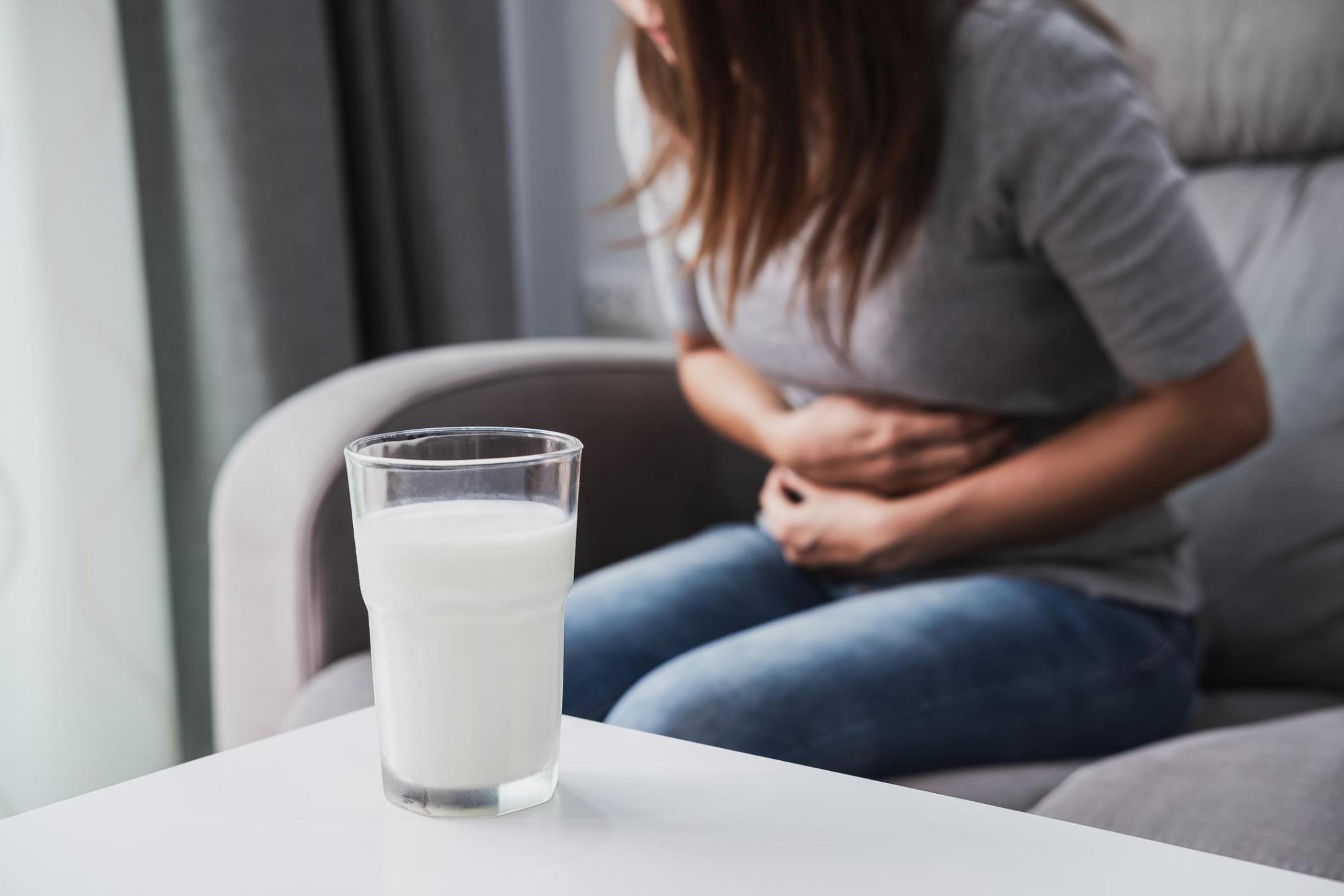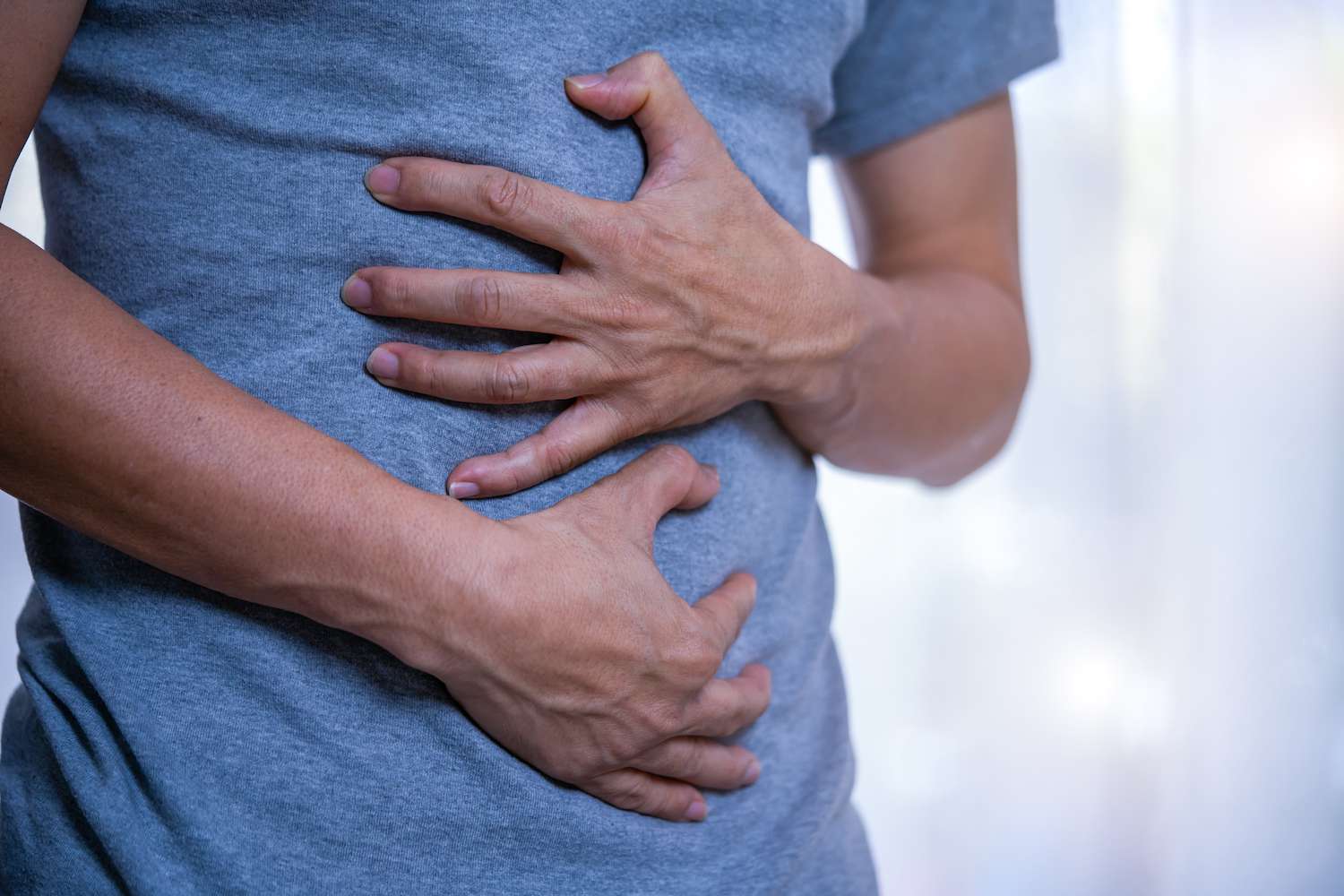

FAQs
Why Do I Fart On Airplanes
Modified: August 5, 2023
Find out the reasons behind feeling gassy on airplanes and get answers to your general questions about this common occurrence.
(Many of the links in this article redirect to a specific reviewed product. Your purchase of these products through affiliate links helps to generate commission for Under-tec.com, at no extra cost. Learn more)
Table of Contents
- Introduction
- The Science of Flatulence
- Factors Contributing to Increased Flatulence on Airplanes
- Cabin Pressure and Its Effect on Flatulence
- Airline Food and Its Impact on Gas
- Sitting Position and Its Influence on Flatulence
- Psychological Factors and the Mind-Gut Connection
- Tips to Reduce Flatulence while Flying
- Conclusion
Introduction
Have you ever found yourself feeling a little more gassy when you’re on an airplane? You’re not alone. Many people experience an increase in flatulence when flying, and it can be an uncomfortable and embarrassing experience. But why does this happen? In this article, we will delve into the science behind flatulence on airplanes and explore the various factors that contribute to this phenomenon.
The human body produces gas as a natural byproduct of digestion. When we eat and drink, we also swallow air, which adds to the gas in our digestive system. This gas needs to be expelled from our bodies, either through burping or farting. In a normal situation, this process occurs without much notice or discomfort. However, when we are at a higher altitude on an airplane, the dynamics change, leading to an increase in flatulence.
Flatulence is a normal bodily function, and the average person passes gas anywhere from 13 to 21 times a day. It is primarily composed of odorless gases such as nitrogen, oxygen, carbon dioxide, and methane. However, the presence of sulfur compounds in certain foods can make flatulence smell unpleasant.
Now that we’ve established the natural occurrence of flatulence, let’s explore why it becomes more noticeable and frequent during air travel. There are several factors at play, ranging from the difference in cabin pressure to the food we consume and even our sitting position. By understanding these factors, we can better manage our flatulence and make our flights more comfortable for ourselves and those around us.
The Science of Flatulence
Flatulence, commonly known as passing gas or farting, is a natural process that occurs in the digestive system. It is caused by the breakdown of food in the intestines, which produces various gases as byproducts. The main gases in flatulence are nitrogen, oxygen, carbon dioxide, and methane.
As we eat and drink, we also swallow air, which increases the amount of gas in our digestive system. This gas needs to be expelled, and our body does so through burping or farting. On average, a person passes gas around 13 to 21 times per day.
The smell associated with flatulence comes from certain sulfur compounds that are present in some foods. These compounds can produce foul-smelling gases when they are broken down in the digestive system.
Flatulence is a normal and necessary bodily function. It helps to relieve pressure in the digestive system and aids in the overall digestion process. However, when we are in an airplane, the dynamics of flatulence can change.
At higher altitudes, the air pressure is lower than at sea level. This decrease in pressure affects the gases in our body, causing them to expand. As a result, any gas in our intestines expands as well, leading to an increase in flatulence. This is why people often feel more gassy when flying.
Additionally, the vibrations and movements of the airplane can also contribute to increased flatulence. These movements can stimulate the muscles in the digestive system, leading to more gas being expelled.
Overall, flatulence is a natural bodily function that occurs as a result of digestion. When flying, the combination of lower air pressure, increased gas expansion, and the movements of the airplane can lead to heightened flatulence. By understanding the science behind flatulence, we can better manage and cope with this common occurrence during air travel.
Factors Contributing to Increased Flatulence on Airplanes
There are several factors that contribute to the increased flatulence experienced by individuals when flying on airplanes. These factors include changes in cabin pressure, the impact of airline food, sitting position, and even psychological factors.
One of the primary factors is the change in cabin pressure. As the airplane ascends to higher altitudes, the atmospheric pressure decreases. This decrease in pressure can cause the gas in our digestive system to expand. The expansion of gas leads to an increase in flatulence, making us feel more gassy during the flight.
Alongside cabin pressure, the food served on airplanes can also play a role in increased flatulence. Airline food often contains ingredients that are known to cause gas, such as beans, lentils, cabbage, and broccoli. These foods are high in fiber, which is beneficial for digestion but can also produce more gas. Additionally, some individuals may have food intolerances or sensitivities that can contribute to increased flatulence when consuming certain airline meals.
Another factor is the sitting position during the flight. When we sit for long periods, especially in a confined space like an airplane seat, it can lead to decreased movement in the digestive system. This reduced movement can slow down the digestive process, allowing gas to build up and resulting in more flatulence. Furthermore, being sedentary for an extended period can affect the natural rhythm of our digestion and contribute to bloating and increased gas production.
Surprisingly, psychological factors can also influence flatulence. Stress and anxiety can impact our digestion and contribute to increased gas production. When we’re anxious or nervous during a flight, our body may enter into a “flight or fight” response, diverting blood flow away from the digestive system. This can lead to a decrease in digestive enzyme production and slower digestion, increasing the likelihood of experiencing flatulence.
It’s important to note that these factors can affect individuals differently. Some people may be more sensitive to changes in cabin pressure or certain foods, while others may not experience any significant increase in flatulence during flights. However, understanding these contributing factors can help us manage and alleviate the discomfort of excessive flatulence during air travel.
Cabin Pressure and Its Effect on Flatulence
One of the significant factors contributing to increased flatulence during air travel is the change in cabin pressure. As an airplane ascends to higher altitudes, the atmospheric pressure decreases. This decrease in pressure can have a direct effect on the gases within our bodies, causing them to expand.
To understand the impact of cabin pressure on flatulence, it’s helpful to know a bit about Boyle’s Law. Boyle’s Law states that the volume of a gas is inversely proportional to its pressure. In other words, as the pressure decreases, the volume of the gas increases.
When we’re on an airplane, the reduced cabin pressure affects the gases in our digestive system. Any gas present in the intestines will expand as the pressure decreases, leading to an increase in flatulence. This is why many individuals feel bloated and gassy during flights.
The expansion of gases in the digestive system can generate discomfort, as the increased pressure may stretch the intestinal walls, stimulating nerves and causing a sensation of fullness. This can contribute to an increased urge to pass gas and relieve the pressure.
It’s worth noting that the effects of cabin pressure on flatulence can vary from person to person. Some individuals may be more sensitive to the changes in pressure, experiencing more significant discomfort and increased flatulence, while others may be less affected.
Additionally, the duration of the flight can also influence the extent of the impact. Typically, the longer the flight, the more prominent the effects of cabin pressure on flatulence will be. This is because there is more time for the gases to build up and expand in the digestive system.
To manage the effects of cabin pressure on flatulence, individuals can try some simple techniques. Drinking plenty of water can help maintain hydration and promote regular bowel movements, reducing the buildup of gas. Moving around and stretching during the flight can also help stimulate digestion and relieve pressure in the digestive system.
In summary, the change in cabin pressure during air travel can lead to an increase in flatulence. As the atmospheric pressure decreases at higher altitudes, the gases in our digestive system expand. Understanding this effect can help individuals better manage their flatulence and alleviate any discomfort experienced while flying.
Airline Food and Its Impact on Gas
When it comes to the increased flatulence experienced during air travel, the food served on airplanes can play a significant role. Airline food, though convenient, can contain ingredients that are known to cause gas and bloating in many individuals.
One common culprit in airline meals is high-fiber foods. Foods such as beans, lentils, cabbage, broccoli, and whole grains are rich in fiber, which is excellent for digestion and overall health. However, these high-fiber foods can also produce more gas during the digestion process, leading to increased flatulence.
Another factor to consider is the composition of the meals. Airline food may contain ingredients that are harder to digest, such as fatty or processed foods. These types of foods can slow down the digestion process, allowing more time for gas to build up in the intestines and lead to increased flatulence.
Furthermore, certain food intolerances or sensitivities may be triggered by the ingredients used in airline meals. For example, lactose intolerance can result in gas and bloating when consuming dairy products present in airline dishes. Similarly, individuals with gluten sensitivity or celiac disease may experience digestive discomfort and increased flatulence if their meals contain gluten-containing ingredients.
It’s important to note that not everyone reacts the same way to airline food. Some individuals may have no problem with the meals and experience minimal gas production, while others may be more sensitive to certain ingredients and notice a significant increase in flatulence.
To manage the impact of airline food on gas production, individuals can take a few precautions. It can be helpful to choose meals that are lower in fiber and avoid known trigger foods if possible. Bringing along or purchasing digestive aids like over-the-counter gas relief tablets or enzymes may also alleviate some discomfort associated with increased flatulence.
In summary, the food served on airplanes can contribute to increased flatulence due to its composition and potential for triggering digestive issues. High-fiber foods, harder-to-digest ingredients, and food intolerances can all play a role in gas production during air travel. Being aware of these factors and making conscious choices about the meals consumed can help manage flatulence and promote a more comfortable flight.
Sitting Position and Its Influence on Flatulence
While it may not be the most obvious factor, the sitting position during a flight can have an influence on flatulence. When we sit for extended periods, especially in a confined space like an airplane seat, it can lead to decreased movement in the digestive system, resulting in increased gas production and flatulence.
When we are seated, particularly in a reclined position, the natural movement of the digestive system can be compromised. This decreased movement, also known as reduced peristalsis, can slow down the digestion process. As a result, food stays in the digestive tract for a longer period, giving bacteria more time to break it down and produce gas. This can lead to feelings of bloating and increased flatulence.
The sitting position can also have an effect on the flow of gas throughout the digestive system. When we’re standing or walking, gravity assists in the movement of gas, allowing it to travel upwards and be expelled through burping. However, when we’re in a sitting position, gravity works against us, causing gas to remain in the lower intestines and ultimately be released through flatulence.
The length of the flight can also impact the influence of sitting position on flatulence. On shorter flights, the effects may not be as pronounced since the duration of sitting is relatively limited. However, on longer flights, where individuals are seated for several hours at a time, the reduced movement and sitting position can exacerbate the production of gas and increase the discomfort of flatulence.
One way to mitigate the effects of sitting on flatulence is to make small movements whenever possible. Taking short walks up and down the aisle or performing simple stretching exercises while seated can help stimulate digestion and promote a more regular flow of gas. Additionally, sitting in an upright position, rather than fully reclined, can help alleviate some of the pressure on the digestive tract and reduce the likelihood of excessive flatulence.
In summary, the sitting position during a flight can contribute to increased flatulence. Prolonged sitting, particularly in a reclined position, can lead to reduced movement in the digestive system and hinder the natural passage of gas. Making small movements and sitting in an upright position can help alleviate the effects and promote a more comfortable flight experience.
Psychological Factors and the Mind-Gut Connection
It may come as a surprise, but psychological factors can play a role in increased flatulence during air travel. The mind-gut connection, also known as the brain-gut axis, is a complex and bidirectional relationship between our emotions, thoughts, and the functioning of our digestive system.
When we experience stress, anxiety, or nervousness, it can have an impact on our digestion and contribute to increased flatulence. These psychological factors can trigger a physiological response in the body, diverting blood flow away from the digestive system and affecting its normal functioning.
During moments of stress, our body enters a “fight or flight” response, activating the sympathetic nervous system. This response redirects blood flow to our muscles and vital organs, preparing us to face a perceived threat. However, the “rest and digest” function of the parasympathetic nervous system, which is responsible for normal digestive processes, can be compromised.
When digestion is slowed down or impaired, it can lead to a buildup of gas in the intestines and result in increased flatulence. Additionally, stress and anxiety can also disrupt the balance of gut bacteria, known as the gut microbiome. An imbalanced microbiome can lead to altered digestion and an increase in gas production.
The influence of psychological factors on flatulence can be further explained through the enteric nervous system (ENS). The ENS, also known as the “second brain,” is a complex network of nerves found in the digestive system. It communicates with the central nervous system and is responsible for regulating various gastrointestinal functions, including digestion and gas movement.
The ENS can be influenced by stress and other emotional factors. When we’re in a state of heightened emotion, it can impact the movement and contractions of the gastrointestinal muscles, leading to increased gas production and flatulence.
Managing psychological factors can help alleviate the impact on flatulence during air travel. Engaging in relaxation techniques, such as deep breathing exercises, meditation, or listening to calming music, can help reduce stress and promote a healthier mind-gut connection. It’s also beneficial to practice self-care and prioritize mental well-being before and during flights. Taking steps to minimize stress and anxiety can have a positive impact on digestion and reduce excessive flatulence.
In summary, psychological factors such as stress, anxiety, and the mind-gut connection can contribute to increased flatulence during air travel. The relationship between our emotions and the functioning of our digestive system can alter digestion, disrupt the gut microbiome, and affect gas production. By managing psychological factors and prioritizing mental well-being, individuals can help minimize the impact on flatulence and have a more comfortable flight experience.
Tips to Reduce Flatulence while Flying
Experiencing increased flatulence during air travel can be uncomfortable and sometimes embarrassing. However, there are several tips and strategies that can help reduce flatulence and alleviate any discomfort while flying.
1. Choose your food wisely: Before your flight, opt for lighter, easily digestible meals that are lower in fiber and less likely to cause gas. Avoid foods that are known to be gas-producing, such as beans, lentils, cabbage, and broccoli.
2. Stay hydrated: Drinking plenty of water before and during your flight can help maintain hydration and promote regular bowel movements. This can help reduce the buildup of gas in the digestive system.
3. Limit carbonated beverages: Carbonated drinks can introduce additional gas into your digestive system, leading to increased flatulence. It’s best to avoid or limit consumption of carbonated beverages while flying.
4. Avoid chewing gum and drinking through straws: Chewing gum and drinking through straws can cause you to swallow more air, leading to increased gas in your digestive system. Opt for other methods to keep your ears clear during changes in cabin pressure.
5. Move and stretch during the flight: Engaging in light exercises and stretching while seated can assist in stimulating digestion and reducing the buildup of gas. Take short walks up and down the aisle whenever possible to promote movement in your abdominal area.
6. Practice deep breathing and relaxation techniques: Deep breathing exercises and relaxation techniques can help reduce stress and anxiety, which are known contributors to increased flatulence. Take a few moments to focus on your breath and find calmness during the flight.
7. Consider over-the-counter remedies: If you frequently experience discomfort or excessive flatulence when flying, consider speaking with a healthcare professional about over-the-counter options, such as gas relief tablets or digestive enzymes to help alleviate symptoms.
8. Dress comfortably: Wearing loose and comfortable clothing can help reduce pressure on your abdomen and allow for better digestion. Avoid wearing tight-fitting clothes that can restrict movement and contribute to gas buildup.
9. Pack your own snacks: If possible, bring along your own snacks that are low in gas-producing ingredients. This will give you more control over the types of foods you consume during your flight.
10. Prioritize mental well-being: Managing stress and anxiety can have a positive impact on digestion and reduce excessive flatulence. Take time to engage in activities that help you relax and maintain a calm state of mind during your flight.
By incorporating these tips into your air travel routine, you can help reduce flatulence and enjoy a more comfortable and pleasant flight experience.
Conclusion
Increased flatulence during air travel is a common experience for many individuals. Understanding the science behind flatulence and the factors contributing to its occurrence can help us better manage and alleviate the discomfort while flying.
We explored how changes in cabin pressure can lead to the expansion of gases in the digestive system, contributing to increased flatulence. Airline food, with its high-fiber content and potential for triggering food intolerances, can also play a role in gas production. Additionally, the sitting position during a flight and the influence of psychological factors on digestion and the mind-gut connection can contribute to excessive flatulence.
Fortunately, there are several strategies we can employ to help reduce flatulence while flying. Choosing lighter, easily digestible meals before the flight, staying hydrated, and avoiding carbonated drinks can all make a difference. Moving and stretching during the flight, practicing relaxation techniques, and dressing comfortably can help stimulate digestion and alleviate symptoms. Additionally, considering over-the-counter remedies and prioritizing mental well-being can also contribute to a more comfortable flight experience.
Remember, experiencing flatulence during air travel is a natural process that occurs as a result of digestion. It is important to manage and alleviate any discomfort, not only for our own well-being but also for the comfort of those around us. By implementing these tips and understanding the factors at play, we can have a more enjoyable and pleasant journey in the skies.










